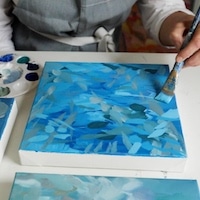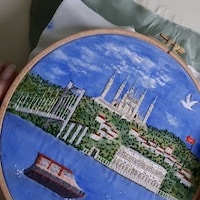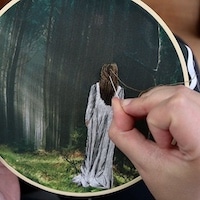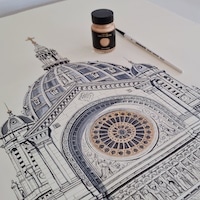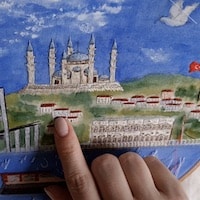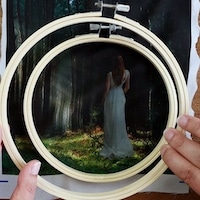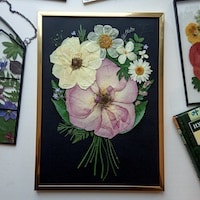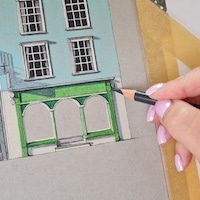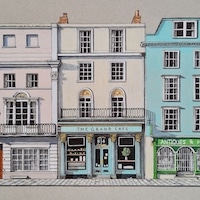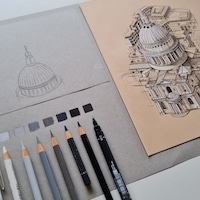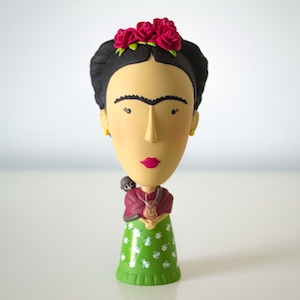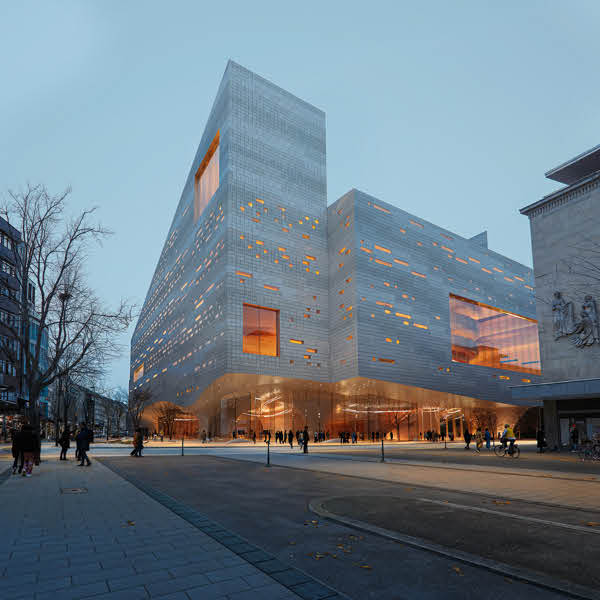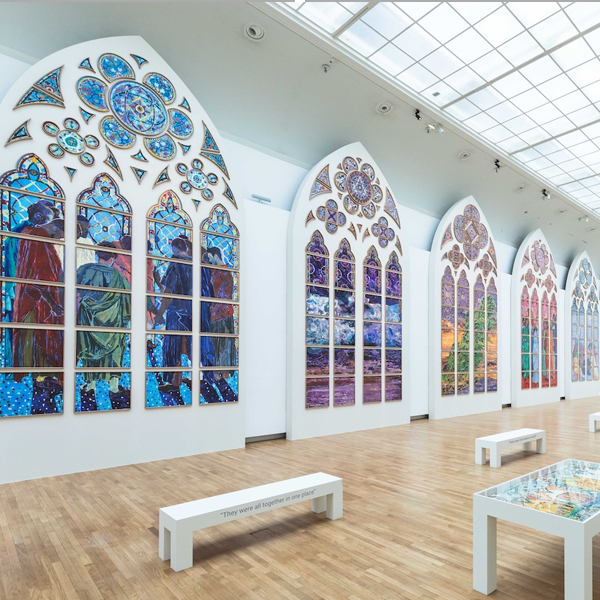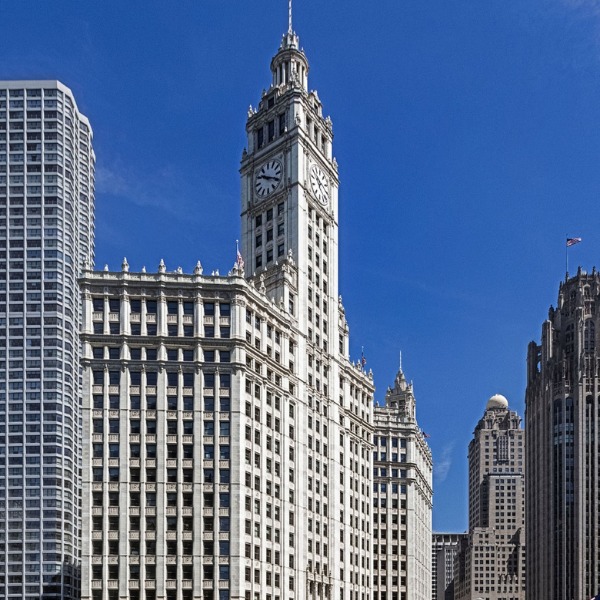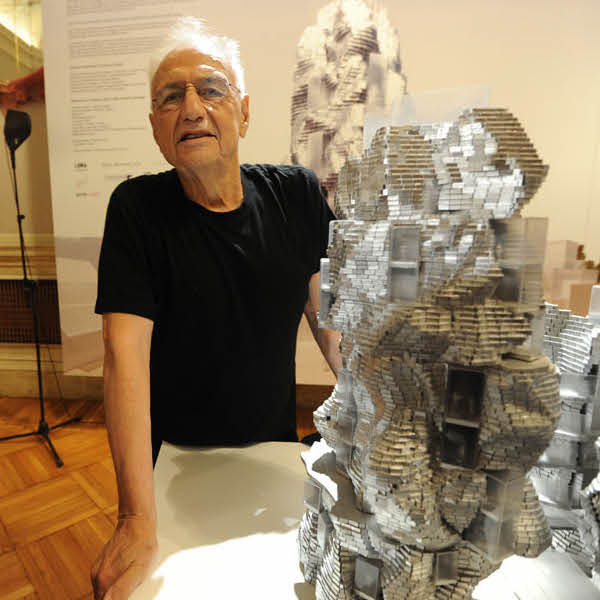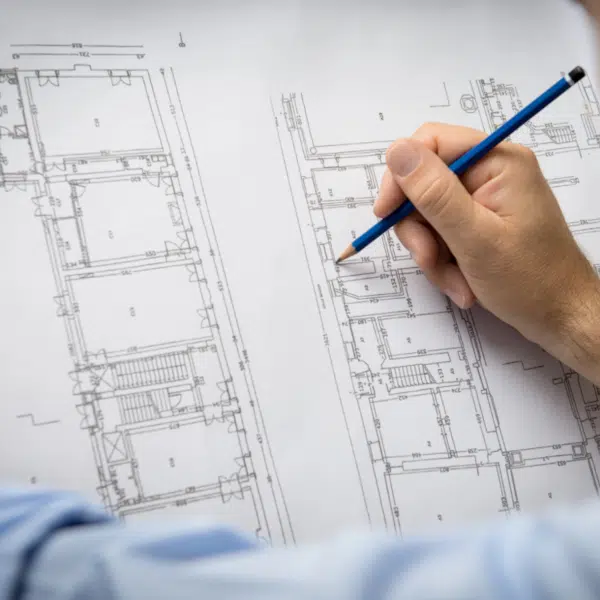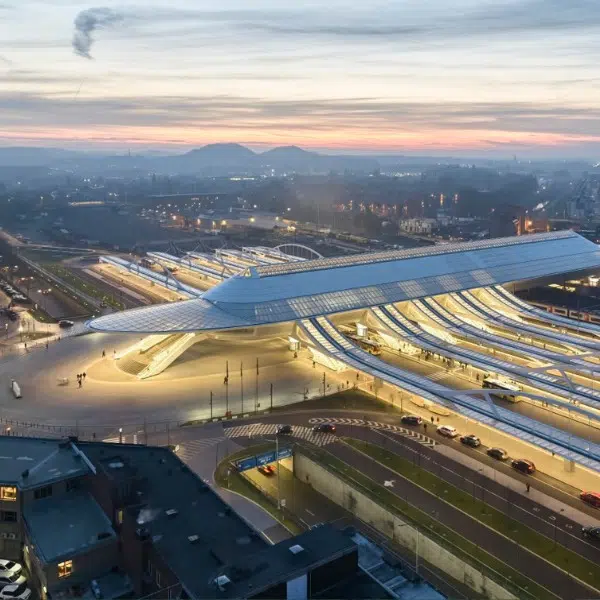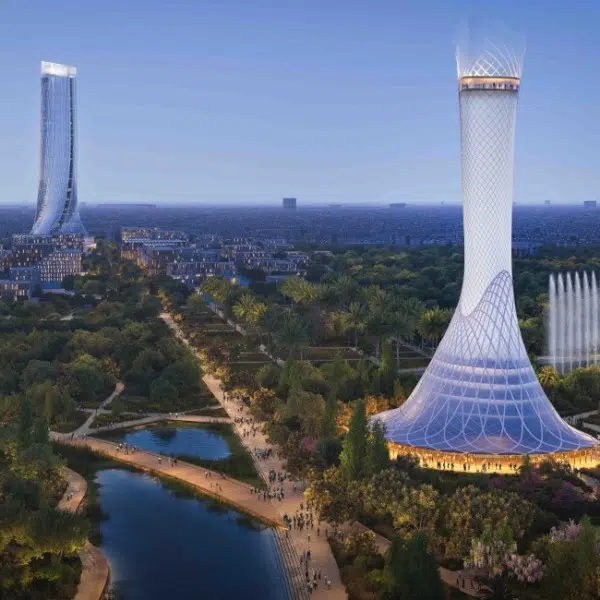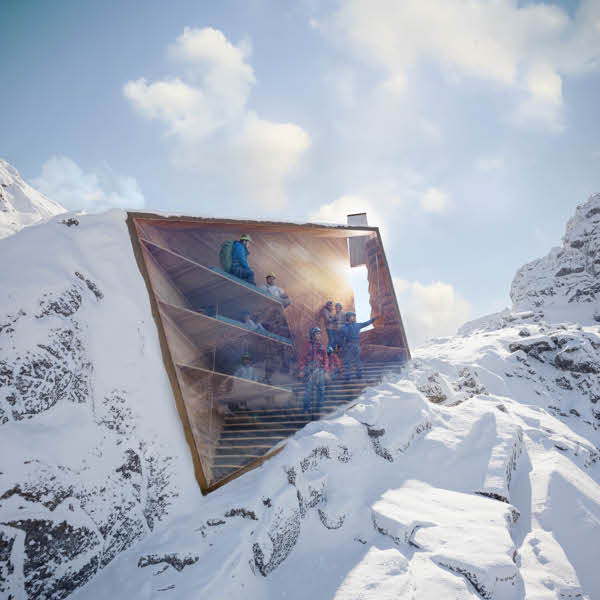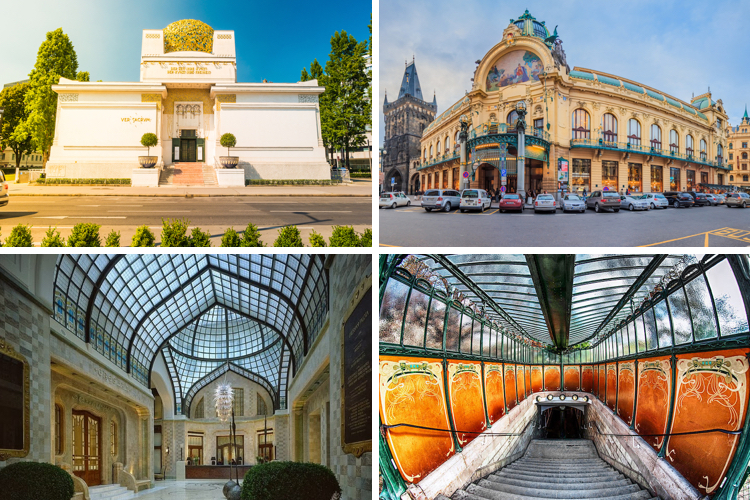
This post may contain affiliate links. If you make a purchase, My Modern Met may earn an affiliate commission. Please read our disclosure for more info.
At the turn of the 20th century, a new architectural movement swept through Europe, creating some of the most spectacular monuments in history. From about 1890 to the start of World War I, Art Nouveau architecture swept across the continent, making use of new technologies for a highly ornamental, elaborate style.
When we think of paintings by Gustav Klimt or Alphonse Mucha, we’re touching on the Art Nouveau aesthetic. It’s a style influenced by nature, where stylized forms come together for bold, elaborate architecture. Just what are the hallmarks of Art Nouveau architecture? Aside from curving lines and shapes inspired by natural forms, the use of glass and wrought iron brings sculptural elements to Art Nouveau structures. In fact, architects of the time embraced the possibilities brought on by the Industrial Revolution.
Not focused only on exterior architecture, Art Nouveau is a complete style that includes furnishings and interiors. From silverware to wallpaper, artists were dedicated to creating a complete, immersive experience. But just where did the name, Art Nouveau (‘New Art’) come from? We can thank the French, who named the style after a gallery—Maison de l’Art Nouveau–that featured the style. It’s also known as Belle Époque, Modernisme, Jugendstil, and Liberty Style, depending on the country.
Scroll down to learn about 10 examples of this famous style.
Let’s take a tour across Europe to see 10 examples of Art Nouveau architecture.
Secession Building, Vienna, Austria
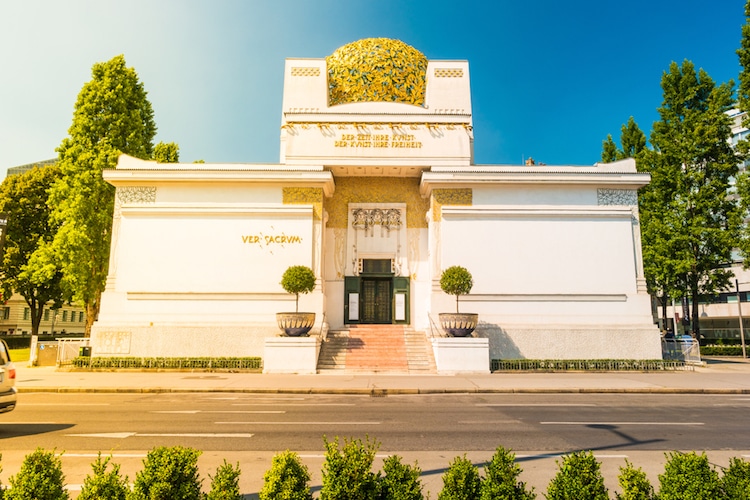
Photo: Stock Photos from Romas_Photo/Shutterstock
In Vienna, a group of rebel artists broke out to form the Secession, a branch of Art Nouveau. The Secession Building, constructed in 1897, was a visual manifestation of their beliefs. Gustav Klimt created a frieze for the now-iconic structure, which has the group's slogan, “To every age its art, to every art its freedom,” carved above the door.
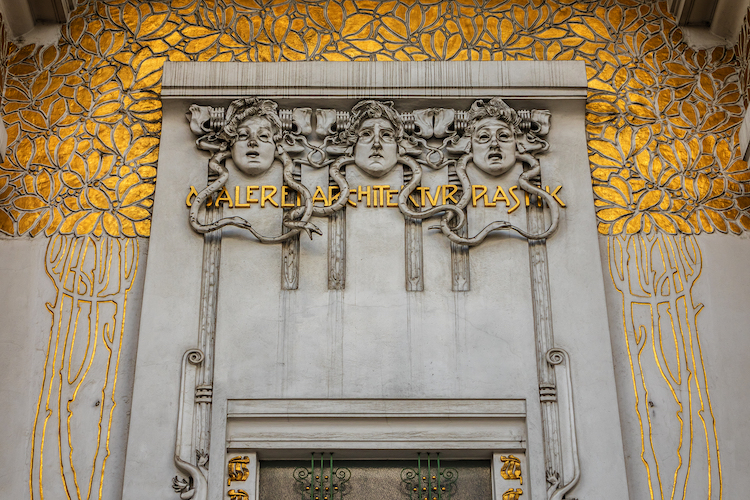
Photo: Stock Photos from Kiev.Victor/Shutterstock
Majolica House, Vienna, Austria
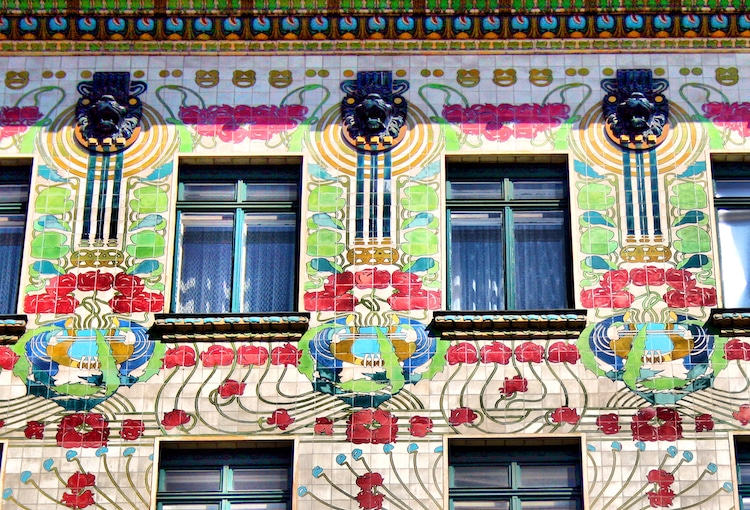
Exterior of Majolika House (Photo: Greymouser via Wikimedia Commons, CC BY-SA 3.0 AT)
Majolica House is another building created in the Vienna Secession, between 1889 – 1899. Designed by architect Otto Wagner, this structure received its name from the lavish floral tiles which cover its facade. The type of glazing process used to make these pottery pieces is called majolica. In addition to their beautiful appearance, these tiles allow the building to be cleaned easily.
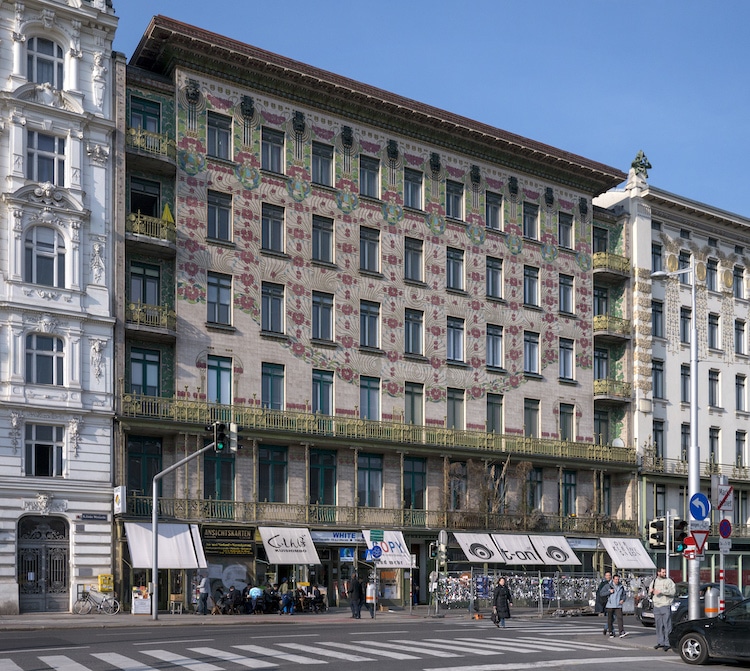
Exterior of Majolika House (Photo: Thomas Ledl via Wikimedia Commons, CC BY-SA 4.0)
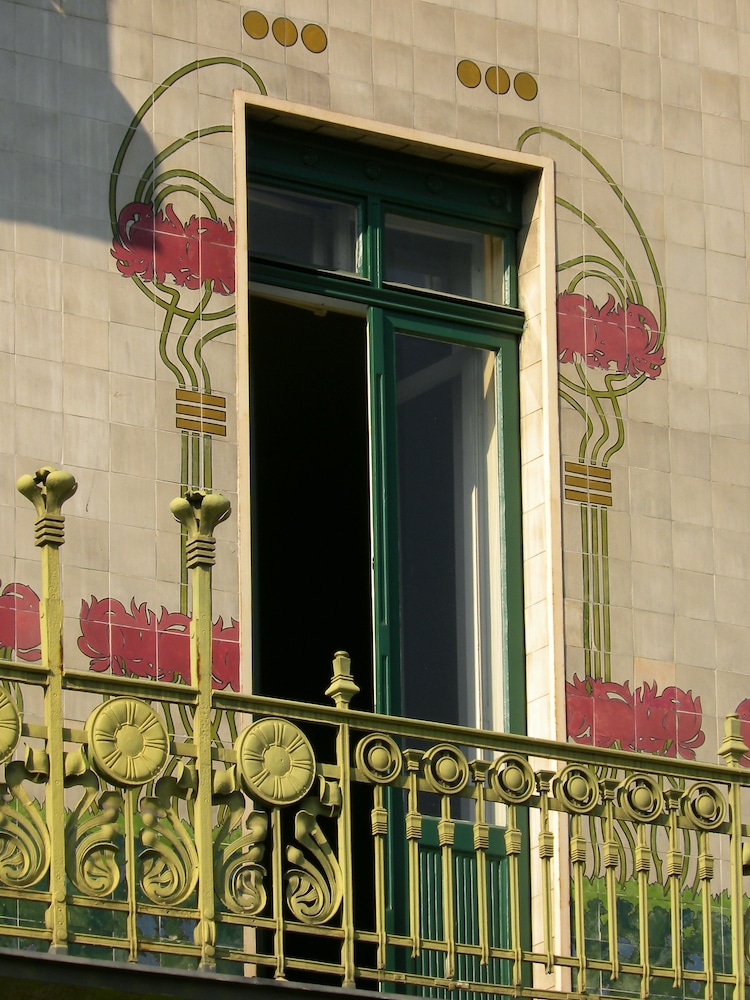
Balcony of Majolika House (Photo: Haeferl via Wikimedia Commons, CC BY-SA 3.0 AT)
Casa Battló, Barcelona, Spain
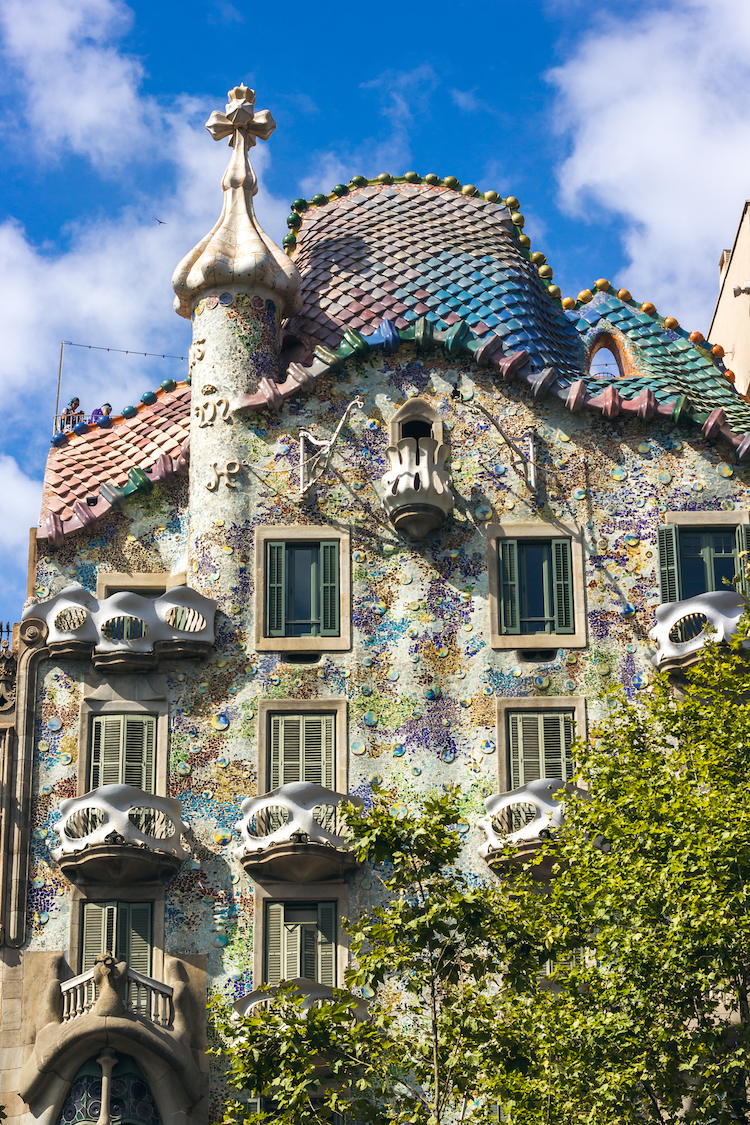
Photo: Stock Photos from Bozhena Melnyk/Shutterstock
Also known as the House of Bones, Casa Battló was remodeled in 1904 by famed architect Antoni Gaudí. It's defined as an example of Art Nouveau architecture (or its Spanish term Modernisme) in a broad sense, with its curving facade and use of glass and ironwork.
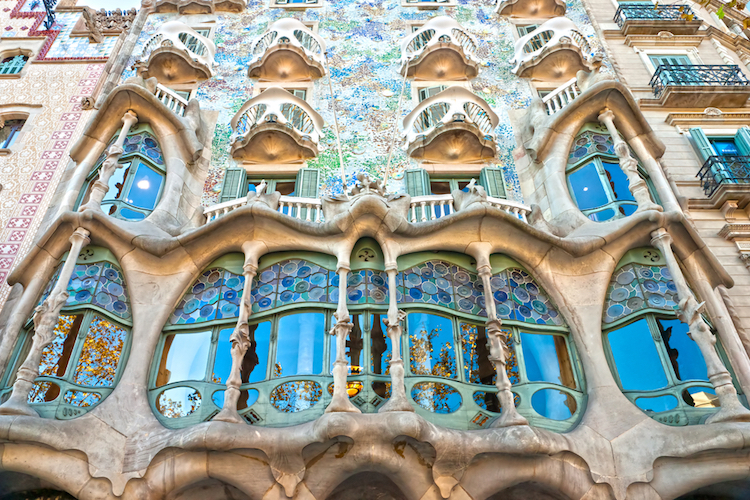
Photo: Stock Photos from Luciano Mortula – LGM/Shutterstock
Cat House, Riga, Latvia
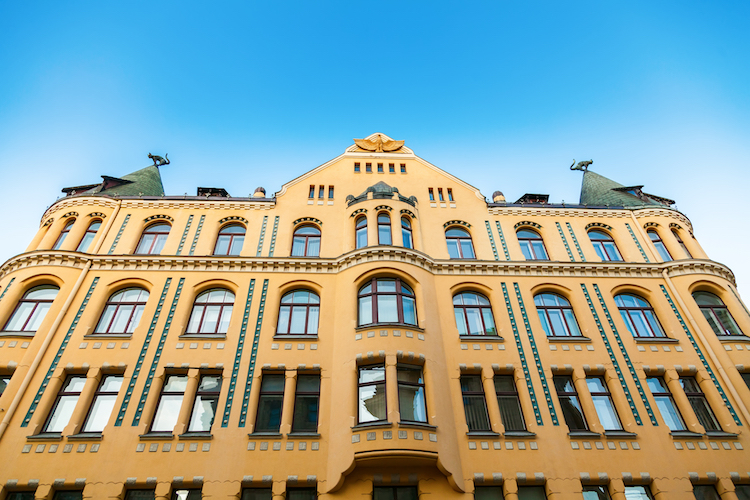
Photo: Stock Photos from Anna Lurye/Shutterstock
Riga is the place to go for Art Nouveau lovers, as it's estimated that one-third of the city's buildings were constructed in this style. Built in 1909, the Cat House takes its name from two cat sculptures that grace the roof.
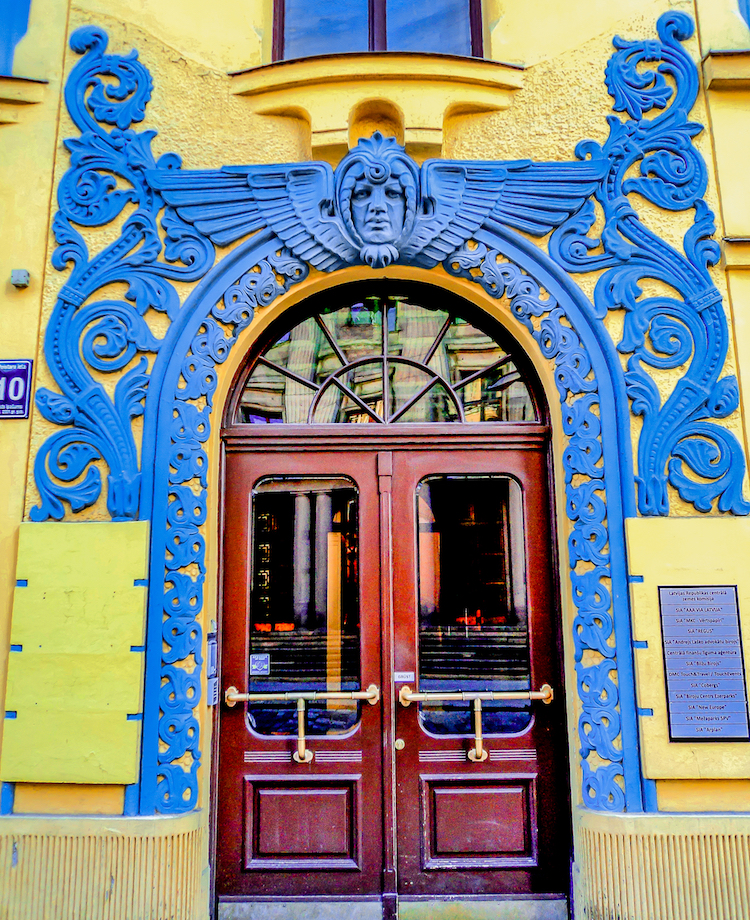
Photo: Stock Photos from Zabotnova Inna/Shutterstock
Hôtel Tassel, Brussels, Belgium
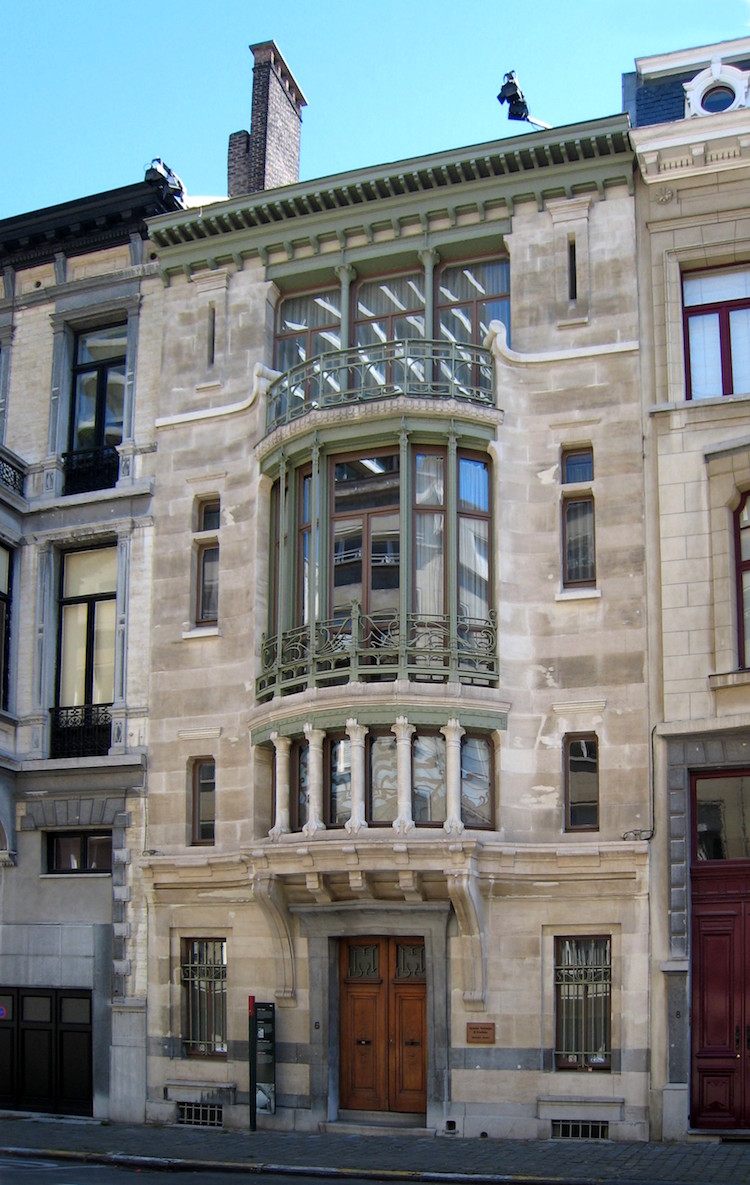
Photo: Karl Stas via Wikimedia Commons (CC BY-SA 3.0)
The Hôtel Tassel was built between 1893 and 1894 for scientists and professor Emile Tassel. Architect Victor Horta's use of glass and iron building materials have garnered this Belgian townhouse the honor of being the first Art Nouveau piece of architecture. The intricate interior railings and wallpapers with Art Nouveau patterning demonstrate how the style moved from exterior to interior with ease.
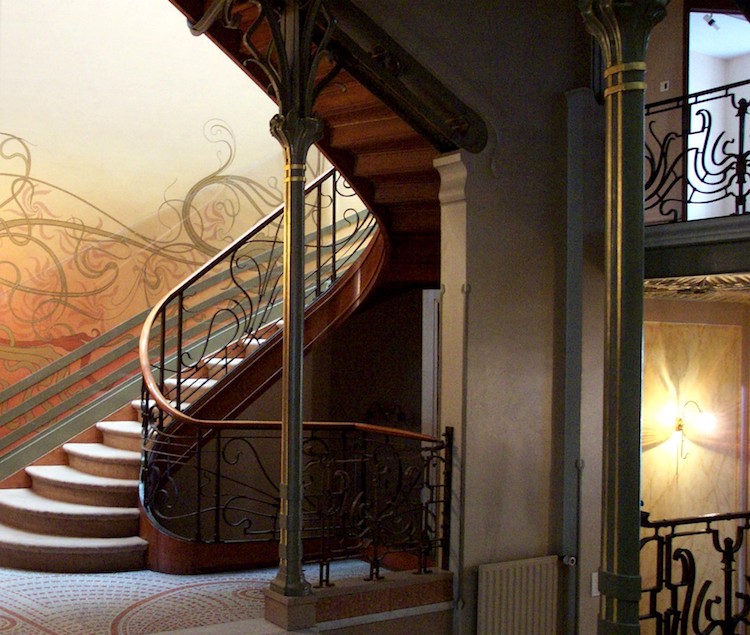
Photo: Henry Townsend via Wikimedia Commons (Public domain)
Gresham Palace, Budapest, Hungary
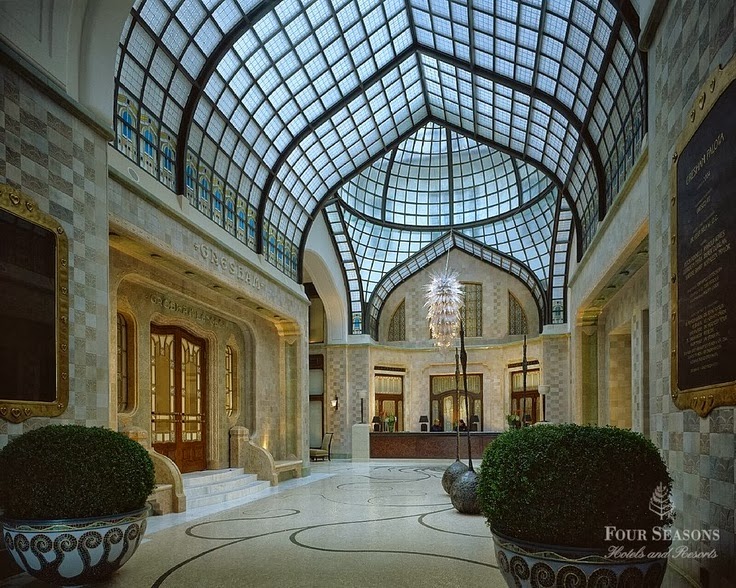
Photo: Four Seasons Budapest
Now the Four Seasons Hotel, the Gresham Palace in Budapest was an office and apartment building completed in 1906. Interestingly, the space was used as an army barracks during World War II by the Red Army. Quite an interesting change of events for such a sumptuous interior!
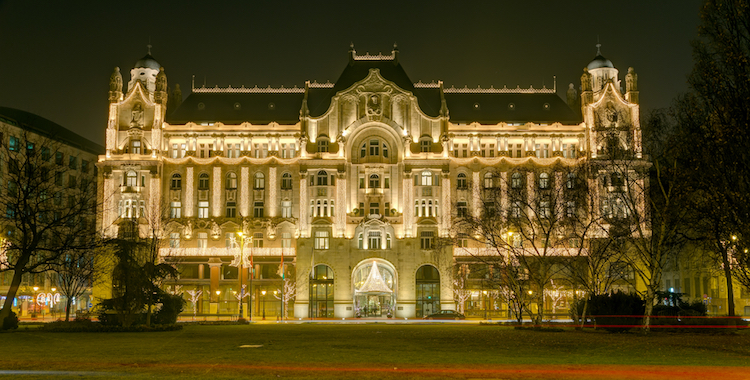
Photo: Stock Photos from Lefteris Papaulakis/Shutterstock
Museum of Applied Arts, Budapest, Hungary
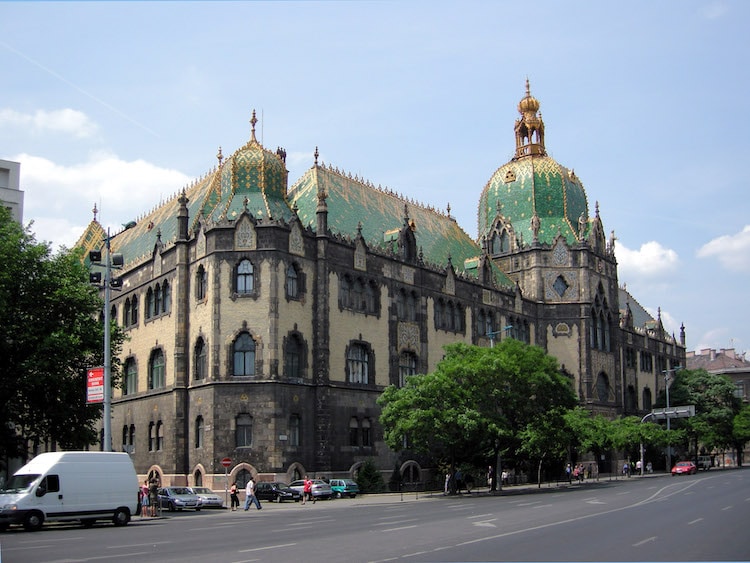
Exterior of the Museum of Applied Arts in Budapest, Hungary (Photo: Yoav Dothan via Wikimedia Commons, Public domain)
Constructed between 1893 and 1896, the Museum of Applied Arts is a stunning example of Art Nouveau architecture made in the Hungarian Secession style—a counterpart to the Austrian Secession. It features an emerald green roof and numerous gold details. Many of its interior decorative elements are inspired by Hindu, Mogul, and Islamic designs.
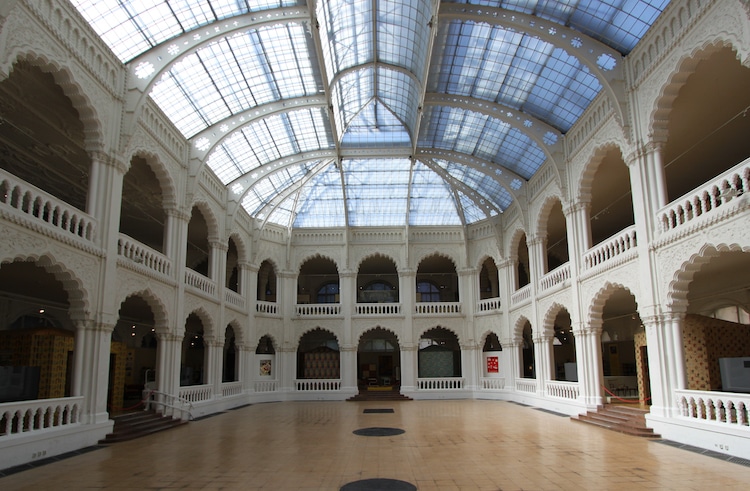
Interior of the Museum of Applied Arts in Budapest, Hungary (Photo: Silas via Wikimedia Commons, CC BY-SA 3.0)
Municipal House, Prague, Czech Republic
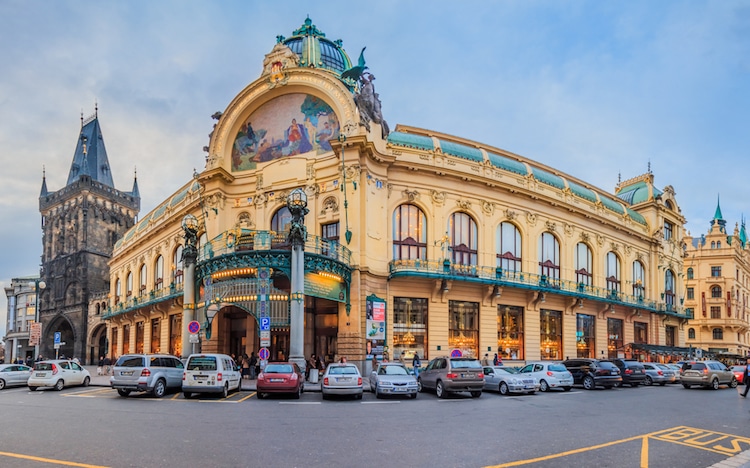
Photo: Stock Photos from SvetlanaSF/Shutterstock
The Municipal House was built on the site of the former Royal Palace, opening to the public in 1912. Filled with allegorical detail glorifying the city, the site is brimming with ornate finishes. Certain touches are even inspired by what would have been considered “exotic” cultures at the time, such as Egyptian. The site contains a concert hall, cafe, ballroom, and offices, all of which are still functioning today.
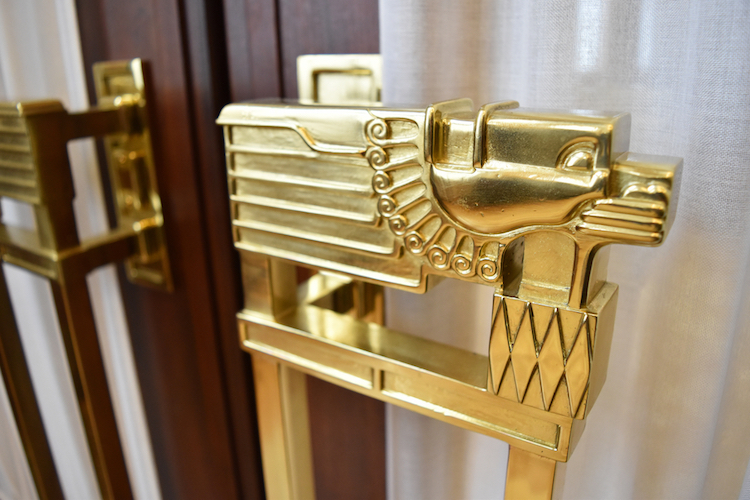
Photo: Stock Photos from hydra viridis/Shutterstock
Old England Building, Brussels, Belgium
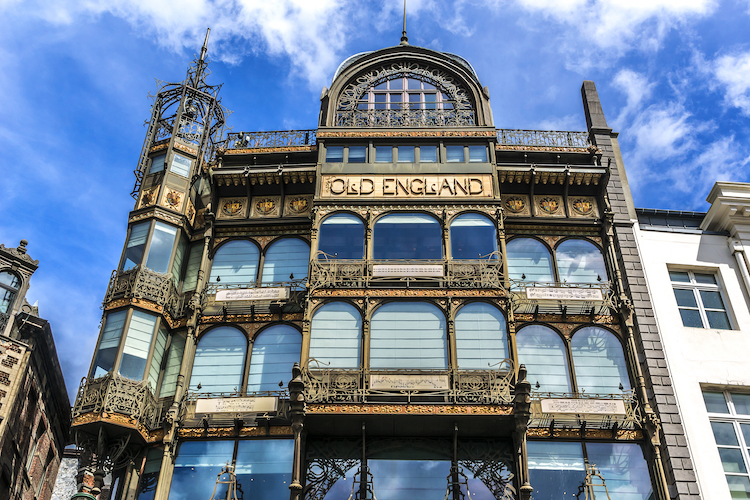
Photo: Stock Photos from Kiev.Victor/Shutterstock
Constructed in 1899 to be a department store, the Old England Building now houses Brussels' Musical Instrument Museum. Made from girded steel and glass, this prime example of Art Nouveau architecture demonstrates how these new technologies, made possible by the Industrial Revolution, helped architects reach new creative heights.
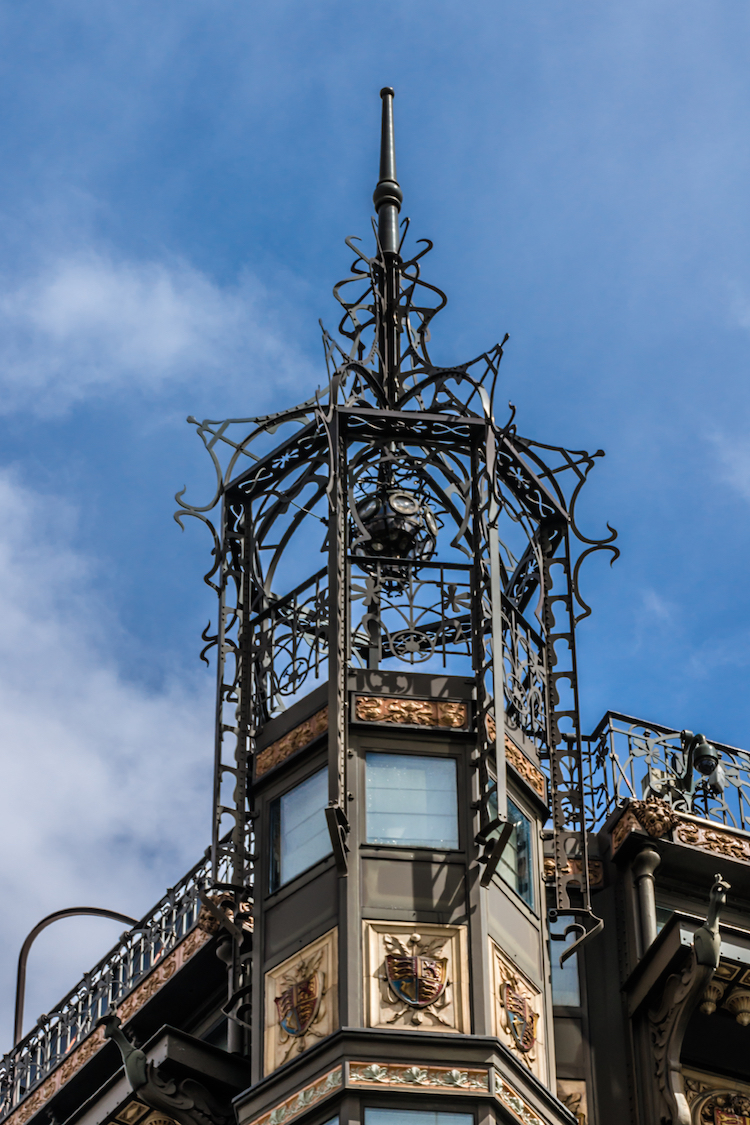
Photo: Stock Photos from Kiev.Victor/Shutterstock
Metro Entrances, Paris, France
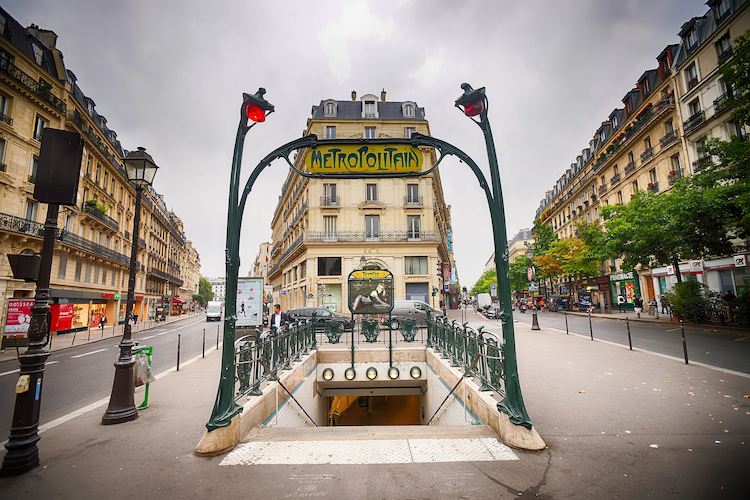
Photo: Stock Photos from Sorbis/Shutterstock
Between 1900 and 1912, 141 Art Nouveau metro entrances were installed in Paris. Designed in two styles by architect Hector Guimard, 86 still remain today. Guimard created two types of entrances, with and without glass roofs, some also featuring paneling with floral motifs. The entrances have become a beloved symbol of Paris, with a replica of a roofed entryway being erected in 2000 at the Châtelet stop.
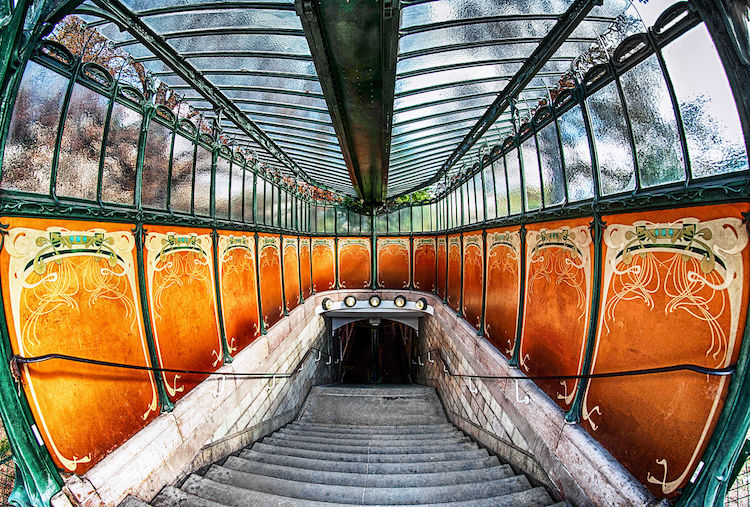
Photo: Magic solo4 via Wikimedia Commons (CC BY-SA 3.0)
What's the difference between Art Nouveau and Art Deco?
Let’s not forget Art Deco. Often confused with Art Nouveau, the two types of architecture are not interchangeable. In fact, Art Deco style emerged in the years between the World Wars. One of the first true, worldwide styles, examples can be found from New York to New Zealand.
Art Deco architecture is more streamlined than its predecessor, but with bold, geometric shapes—think The Great Gatsby. The great skyscrapers in New York from the 1930s are all examples of Art Deco. Making use of chrome plating and stainless steel, the facades were free of the elaborate ornamentation that defined Art Nouveau. The style, which flourished in the 1920s and 1930s, also incorporated design elements from Egyptian, Asian and Pre-Columbian architecture.
Curious about Art Deco architecture? Try Art Deco Architecture: Design, Decoration and Detail from the Twenties and Thirties by Patricia Bayer.
These examples of Art Deco architecture demonstrate how it was a truly international style.
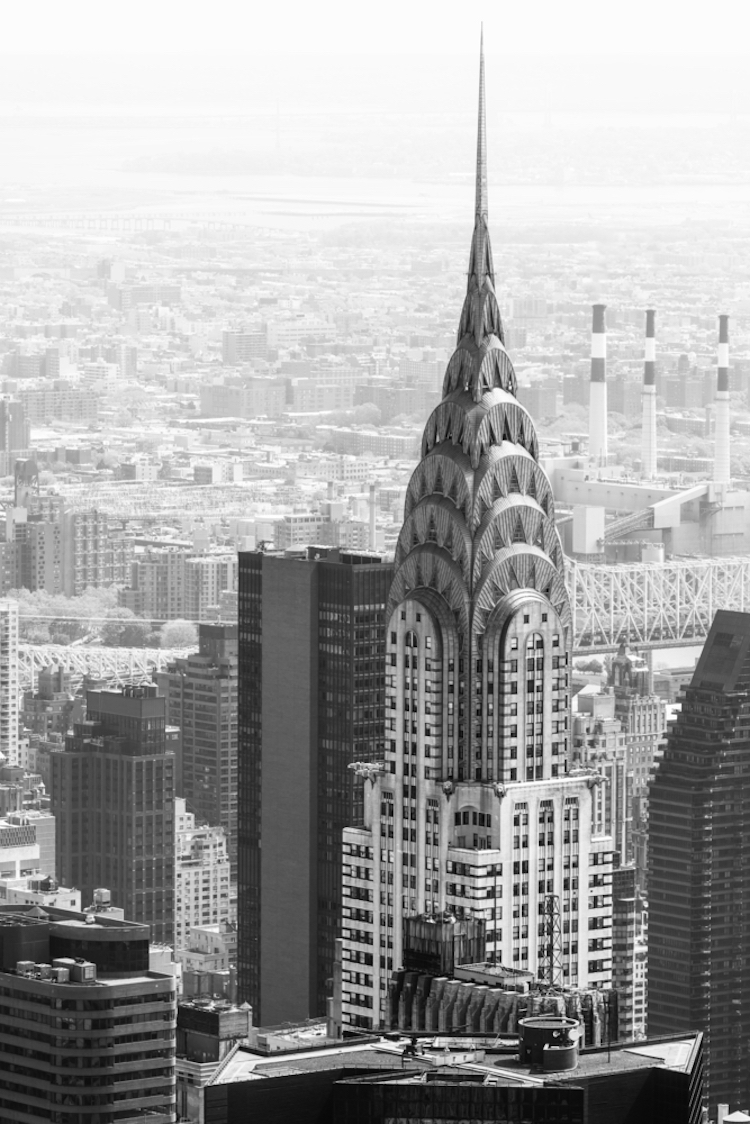
Chrysler Building. New York City, New York. 1930. (Photo: Stock Photos from Drop of Light/Shutterstock)
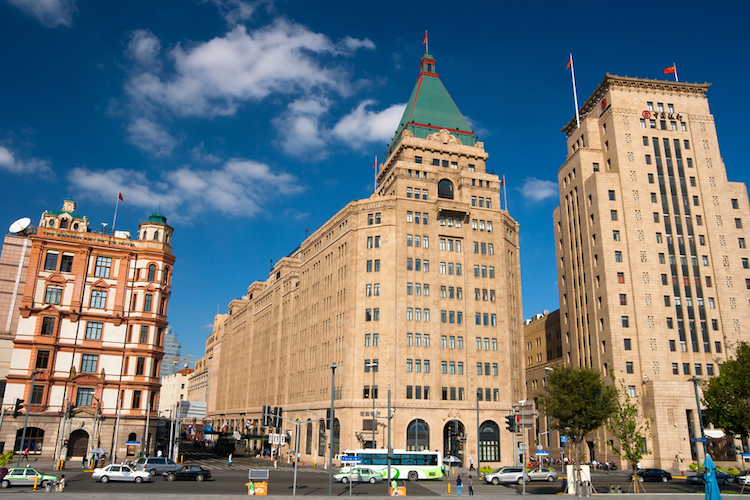
Fairmont Peace Hotel. Shanghai, China. 1956. (Photo: Stock Photos from GuoZhongHua/Shutterstock)
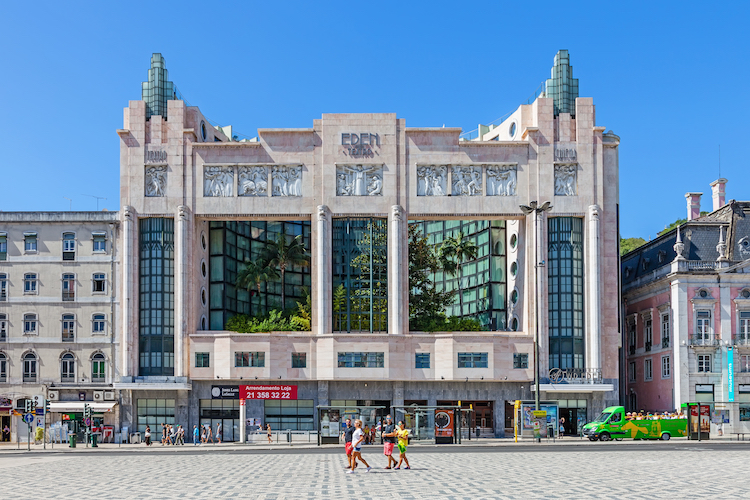
Eden Theater. Lisbon, Portugal. 1931. (Photo: Stock Photos from StockPhotosArt/Shutterstock)
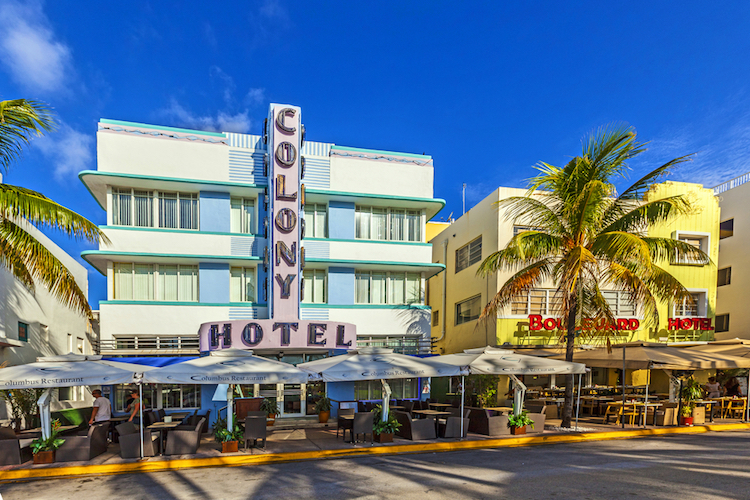
Colony Hotel. Miami, Florida. 1935. (Photo: Stock Photos from travelview/Shutterstock)
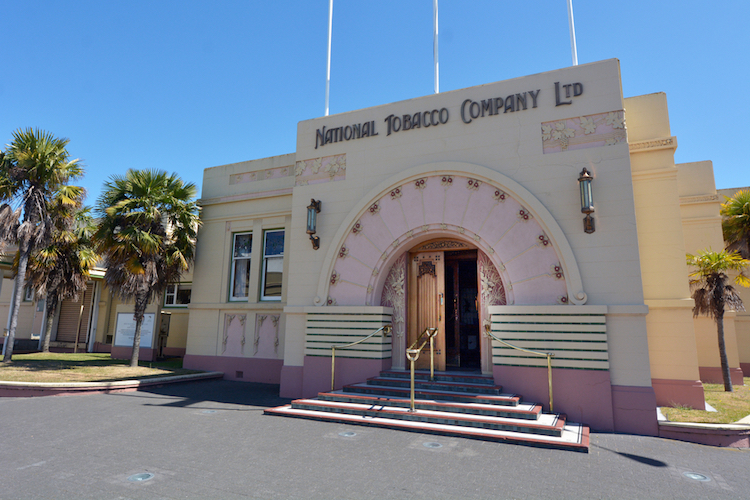
National Tobacco Company. Napier, New Zealand. 1933. (Photo: Stock Photos from ChameleonsEye/Shutterstock)
This article has been edited and updated.
Related Articles:
Architecture 101: 11 Architectural Styles That Define Western Society
First House Ever Designed by Gaudí to Open as a Museum in Barcelona
Booming Tile Shop Handcrafts Every Ceramic Tile as an Individual Work of Art





















